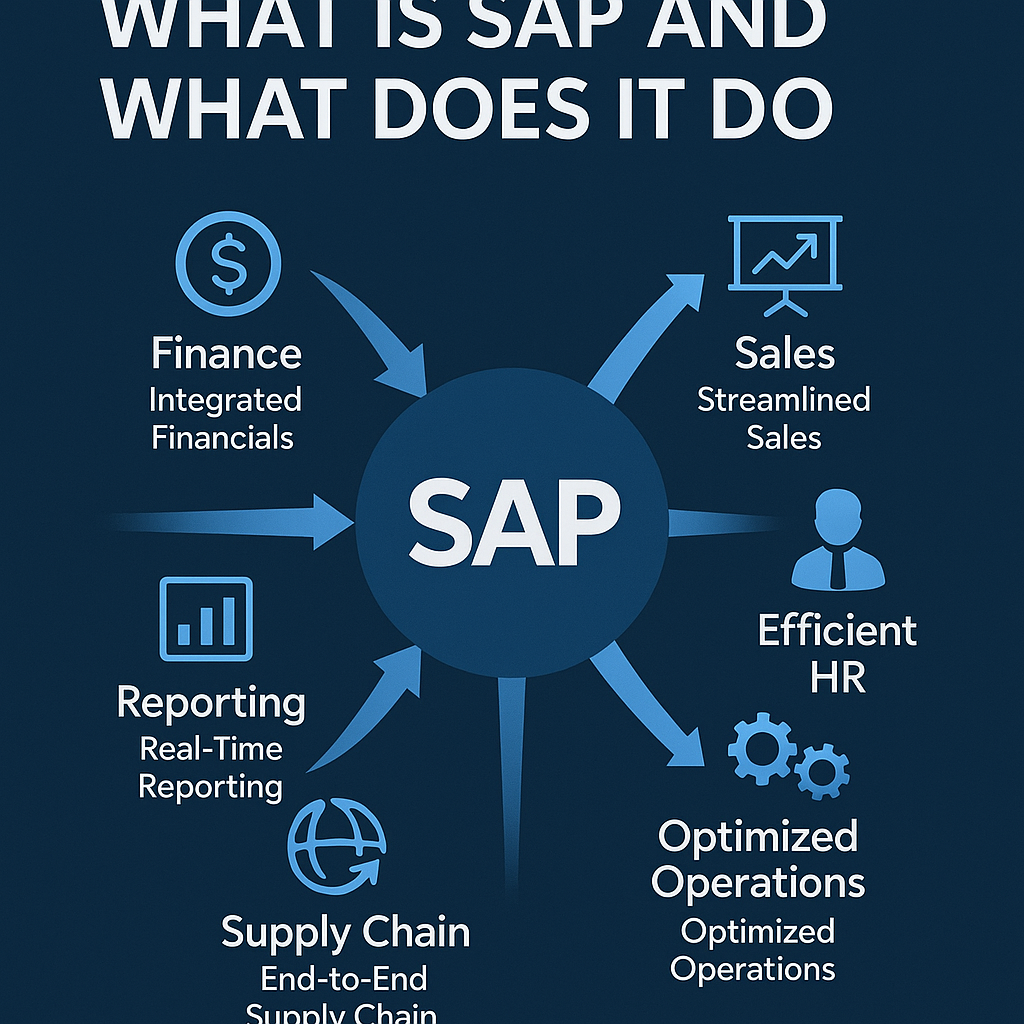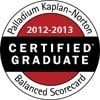Fishing for ROI in your SAP system? Many CEOs and CIOs struggle to realize the full value of their SAP investment—not due to a lack of features, but because the real opportunities are often overlooked.
Just like finding the right spot in a vast lake, strategic SAP system optimization turns missed potential into measurable business results. This guide shows you where to look, what to activate, and how to build a thriving enterprise—starting with the systems you already own.
Need Strategic Level Advice on getting maximum value from your SAP System. Then get our CEO's Guide to SAP

Why Most Companies Leave SAP Value on the Table
I've been in over 230 pre-sales meetings and worked on 38 major SAP projects over the last 27 years. A pattern shows up every time. The conversation almost always turns to budget before it turns to value.
Your team wants to solve big problems for the business. But the pressure to meet a specific budget number often forces them to make compromises. They end up narrowing the project scope just to get the deal signed, leaving significant value from your SAP investment on the table.
Then the implementation phase begins, and the pressure intensifies. Deadlines loom, and project managers start cutting features to stay on schedule. What was once a grand vision for transforming business operations becomes a race to the finish line, leaving powerful functionality on the cutting room floor.
This problem gets worse with multi-country rollouts of SAP systems. Companies often create a limited "template" for the first country, frequently based on legacy systems. Then, they just copy and paste it for every other region to save time and money.
The result is a watered-down SAP environment. You might have implemented fewer than 30 of the more than 2,500 standard business processes SAP offers. Your company paid for a whole ocean but is only fishing in a small pond, leading to poor operational efficiency.
Where to Find the 'Fish' in Your SAP System
So, where are these hidden schools of fish? They are not in some mysterious, far-off part of the lake. They are right under your boat, but you need the right map and performance optimization guide to find them.
Explore Your SAP Enhancement Packages
Many executives are surprised to learn about SAP Enhancement Packages (EhPs). These are bundles of new or improved software functionality that SAP releases periodically. SAP typically includes these in your yearly maintenance fees, meaning you have already paid for them.
The issue is that you must actively "switch on" the functions you want to use within your SAP landscape. Because your teams and SAP basis administrators are busy with daily tasks, they often do not have the time to review the hundreds of new features available in each package. A quick audit here can reveal tools that solve problems you are currently trying to fix with manual workarounds or expensive third party software.
For example, new features in SAP HCM could automate processes your HR team handles manually, improving the employee experience. Likewise, updates to Plant Maintenance might offer predictive analytics tools you are not using. Activating these can lead to a more efficient SAP system and an enhanced user experience.
Pro-Tip: Regularly schedule an internal review of SAP Enhancement Packages. Activating just one underused feature can replace a costly manual workaround and immediately increase SAP ROI.
Review Recent SAP Acquisitions
SAP is constantly buying other technology companies. Think of big names like BusinessObjects for analytics, SuccessFactors for HR, or Ariba for procurement and supply chain management. When these companies become part of the SAP family, their technology eventually gets integrated into the core SAP software.
This means your existing SAP license might now give you access to powerful tools you previously would have had to buy separately. Ask your team to review what new functionality has become available through acquisitions since your last big upgrade or as part of your cloud migration. You could find you already own a top-tier solution for a critical business need without any extra cost.
Identify Redundant 3rd-Party Add-Ons
Over the years, your teams have likely bought many third-party applications to fill perceived gaps in your SAP ECC system. These add-ons plug into SAP to handle everything from tax compliance and data privacy to logistics shipping. But SAP continuously improves its own product, extending SAP capabilities with each release.
Many of those gaps that existed five or ten years ago have now been filled by standard SAP functionality. I've seen clients paying hundreds of thousands in yearly fees for an add-on that SAP now does better, right out of the box. Performing an audit of your third-party software and external systems can lead to serious cost savings and a simpler, more stable system.
For example, on one of my airline projects, the client had purchased an expensive 3rd party product to handle their fuel management and hedging requirements. While the third party product was more than capable of handling this task, my team and I were able to set up a 100% SAP based system to handling their actual fuel management and hedging requirements. It turned out there actual business process was fairly simple, and with a little creativity, we were able to design robust functionality, all with standard SAP. We eliminated the 3rd party system dependency, and radically improved their existing process.
Reducing these dependencies simplifies your overall SAP performance optimization efforts. It also reduces potential points of failure and security risks. A streamlined system with fewer integrations is easier for basis administrators to manage and requires less ongoing support.
Pro-Tip: Run a biannual audit of all third-party integrations against SAP’s new standard functionality. Sunset redundant licenses to cut IT spend and streamline operations.
Audit Unused Standard Processes
Your initial ERP implementation team probably only activated the business processes they absolutely needed to go live. This made sense at the time. But your business has changed since then, and it is highly likely that standard, pre-built SAP processes exist that could support your new business goals.
Often, complex custom ABAP code was written to solve a problem that is now handled by a standard SAP process. Have an internal expert or an experienced SAP partner perform an analysis of your current processes against the full catalog of what SAP offers. This analysis should be part of any guide SAP teams use for continuous improvement. SAP offers a number of tools, such as SAP Signavio, to help with this process.
For example, a deeper look into SAP SD optimization might reveal standard reports and workflows that give your sales team better insights without any new development work. The potential is already in there, waiting to be turned on. Activating these processes can boost user satisfaction and user adoption across the SAP enterprise.
How to Build Your SAP Optimization Roadmap
Finding these pockets of value is the first step; a good SAP performance optimization guide helps here. The next is to build a clear roadmap to actually use them. You do not need a massive, multi-year project to get started on optimizing SAP systems.
Start by using the tools you already have. The SAP Solution Manager contains a wealth of information about how your system is being used and can highlight areas for SAP performance improvements. It can help you identify which business processes are active and which are not, forming the foundation of your optimization guide.
A well-defined SAP based, business process improvement roadmap enables businesses to systematically unlock value. It turns a reactive approach to maintaining SAP into a proactive strategy for growth. Below is a structured approach that SAP powered businesses can follow.

| Roadmap Phase | Key Activities | Primary Goal |
|---|---|---|
| Phase 1: Discovery & Audit | Review Enhancement Packages, analyze third-party software usage, and identify unused standard processes. Engage with business users to understand pain points. | Create a comprehensive inventory of potential optimization opportunities. |
| Phase 2: Prioritization & Business Case | Evaluate opportunities based on ROI, strategic alignment, and implementation effort. Develop a solid business case for the top initiatives. | Secure executive buy-in and allocate resources to the highest-impact projects. |
| Phase 3: Technical Implementation | Activate new functionalities, configure standard processes, and decommission redundant add-ons. Focus on technical stability and database performance. | Safely and efficiently deploy the changes into your productive SAP environment. |
| Phase 4: Change Management & Adoption | Train users on new features and processes. Communicate the benefits to drive user adoption and measure user satisfaction. | Ensure the new capabilities are fully utilized and deliver the expected business value. |
You can also ask for help directly from the source. SAP has internal teams, often called Value Engineering or Business Transformation Consulting (those are two different roles), whose entire job is to help customers like you get more out of their SAP investment. They can run SAP System Optimization assessments and provide benchmarks based on data from thousands of other companies in your industry, offering valuable integration solutions and success stories. These benchmarks often come from an SAP tool called Value Lifecycle Management or SAP VLM, which contains voluntarily provided benchmark data from other SAP customers.
Finally, none of this works without a solid data foundation. Any business strategy you want to execute relies on your ability to measure it. A strong data management strategy is critical before you can improve your business with new functions.
Reassessing your data warehouse and analytics maturity is a key first step. This includes a plan for handling historical data and improving overall SAP data quality. You need to know that your SAP reporting skills and infrastructure can tell you if your changes are working, especially in a fast-paced business environment.
Pro-Tip: Use SAP Solution Manager not just for support tickets, but to proactively identify underused features and business process gaps.
My Proven Process for SAP System Optimization
After decades of guiding CEOs through this process, I have learned a few hard truths. The same performance issues appear at companies large and small, across every industry. Recognizing them is half the battle.
- Your initial SAP scope was limited by design. The budget pressures during the sales cycle forced compromises. It's time to go back and revisit the original business case to see what valuable items were left behind to meet business goals at the time.
- You already paid for features you have not activated. Your annual maintenance fees give you access to a steady stream of innovation from SAP. Make it a yearly task for your team to review and activate relevant enhancement package functionalities.
- Redundant third-party add-ons are wasting your budget. That specialized tool you bought in 2015 might now be a standard feature in SAP. Every dollar you spend on a redundant license is a dollar you can't invest in growth, and it complicates your migration strategy.
- Your data warehouse determines how well you can measure strategy. A modern, profit-driven business strategy is impossible to execute with a ten-year-old approach to data and analytics. Your ability to compete depends on how well you turn raw SAP data into insight with proper performance tools.
- SAP has internal experts who will help. People often see SAP as just a vendor. But they have incredible resources available, from SAP support to specialized teams, that can provide comprehensive help and a wide range of solutions.
These are not just theories. They are field-tested observations from seeing what separates companies that thrive with their SAP enterprise solution from those that just survive. A structured approach to optimization is the difference maker and helps organizations unlock their full potential.
What This Means for You as CEO
You do not need to become an SAP expert. Your job is to lead the company. But you do need to learn to ask the right questions and to fish where the fish actually are.
The value you are looking for to drive growth, efficiency, and innovation is very likely already inside your organization. It's sitting dormant within your existing SAP HANA database or SAP ECC system. You don't always need a new system; you often just need a better way to use the one you have.
Challenge your teams. Ask them, "What features do we already own but are not using?" Push them to look beyond their daily tasks and explore the full power of the platform you have invested so much in.
Your leadership can be the catalyst that turns a costly IT asset into a true strategic weapon. This focus on getting more from your current technology will improve your return on investment and build a more agile foundation for the future. An efficient SAP system directly contributes to better key performance metrics across the board.
Challenge your teams. Ask them, “What features do we already own but are not using?” Push them to look beyond their daily tasks and explore the full power of the platform you have invested so much in.
Your leadership can be the catalyst that turns a costly IT asset into a true strategic weapon.
Conclusion
Just like my cousin Rachael learned that day at the lake, success is not always about working harder or casting further. It's about knowing where to drop your line. The greatest opportunities for your business are often hidden in plain sight, and a thorough plan for SAP system optimization is the map that leads you directly to them.
A proactive SAP optimization plan helps simplify data management, improve the user experience, and drive significant cost savings. It is the most effective way to maximize the value of your substantial technology investment. Stop fishing in empty water and start exploring the deep, value-rich parts of your SAP investment that you already own.
Get a SAP Value Realization Roadmap.
We are a SAP implementation and support partner. We can implement SAP in your business from 'greenfield' all the way to performing global roll-outs. With our deep Industry Expertise, we can help you uncover hidden value within your SAP system and drive your business to levels of profitability. Please our book a meeting service to get started.




